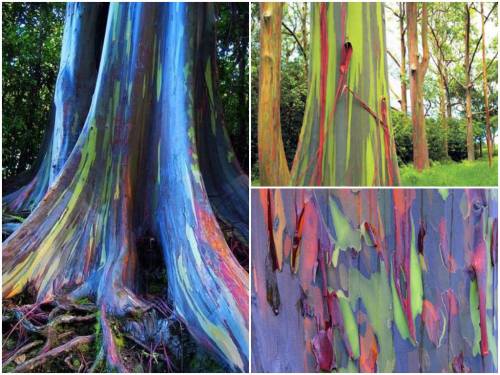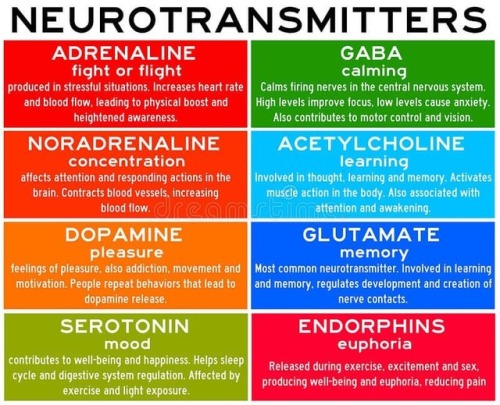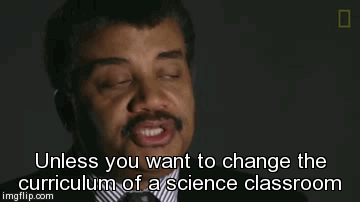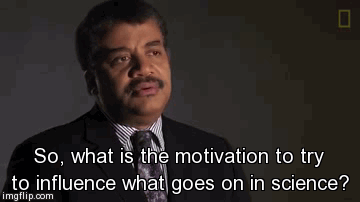Scientists Show How Drug Binds With ‘hidden Pocket’ On Flu Virus

Scientists show how drug binds with ‘hidden pocket’ on flu virus
A new study led by scientists at The Scripps Research Institute (TSRI) is the first to show exactly how the drug Arbidol stops influenza infections. The research reveals that Arbidol stops the virus from entering host cells by binding within a recessed pocket on the virus.
The researchers believe this new structural insight could guide the development of future broad-spectrum therapeutics that would be even more potent against influenza virus.
“This is a very interesting molecule, and now we know where it binds and precisely how it works,” said study senior author Ian Wilson, Hanson Professor of Structural Biology, chair of the Department of Integrative Structural and Computational Biology and member of the Skaggs Institute for Chemical Biology at TSRI.
The study was published in the journal Proceedings of the National Academy of Sciences.
Rameshwar U. Kadam, Ian A. Wilson. Structural basis of influenza virus fusion inhibition by the antiviral drug Arbidol. Proceedings of the National Academy of Sciences, 2016; 201617020 DOI: 10.1073/pnas.1617020114
This is a 3-dimensional illustration showing the different features of an influenza virus, including the surface proteins hemagglutinin (HA) and neuraminidase (NA)/CDC
More Posts from Contradictiontonature and Others

January is #NationalBloodDonorMonth 💉 Which different blood types are compatible with one another? This graphic takes a look: https://ift.tt/35wB7S9 https://ift.tt/2ugvtXs






Why do flowers do the thing they do?
Flowers are the reproductive organs of plants. When pollinated, flowers develop into fruits containing seeds. However, producing flowers, fruits, and seeds is not easy. Plants devote lots of resources and energy to grow these specialized organs. Thus, plants tend to synchronize their efforts with a time of year when conditions are best for reproductive success and survival.
“Annuals” are plants that grow from seed, flower, and die in one year. Since annuals need to grow leaves and stems before they flower, most annuals won’t mature enough to flower until mid-summer or later.
“Winter annuals” get a jump-start on reproduction by germinating from seeds in the fall, over-wintering as rosettes of leaves and storing energy which allows them to flower early in the spring.
“Perennial” plants can live for many years and flower multiple times. Perennials have evolved many different flowering strategies. Most flower in mid- to late summer after they have had time to accumulate the resources needed to produce seeds each year. Others, such as early forest wildflowers, grow for only a short while, blooming before the trees above them leaf out, starving them of light. These plants store energy in underground roots or stems, allowing them to flower early and quickly.
The evolution of such diverse flowering strategies is good for plants that otherwise would have to compete for the same resources at the same time. Its also is nice for us, as we get to enjoy flowers brightening the landscape throughout the growing season.
Giffed by: rudescience From: this video

Viruses support photosynthesis in bacteria: An evolutionary advantage?
Viruses propagate by infecting a host cell and reproducing inside. This not only affects humans and animals, but bacteria as well. This type of virus is called bacteriophage. They carry so called auxiliary metabolic genes in their genome, which are responsible for producing certain proteins that give the virus an advantage. Researchers at the University of Kaiserslautern and the Ruhr University Bochum have analysed the structure of such a protein more closely. It appears to stimulate the photosynthesis of host bacteria. The study has now been published in the journal The Journal of Biological Chemistry.
Raphael Gasper, Julia Schwach, Jana Hartmann, Andrea Holtkamp, Jessica Wiethaus, Natascha Riedel, Eckhard Hofmann, Nicole Frankenberg-Dinkel. Auxiliary metabolic genes- Distinct Features of Cyanophage-encoded T-type Phycobiliprotein Lyase θCpeT. Journal of Biological Chemistry, 2017; jbc.M116.769703 DOI: 10.1074/jbc.M116.769703
The association between the virus protein and bacterial pigment is incredibly stable. Furthermore, the complex is highly fluorescent. Credit: AG Frankenberg-Dinkel

These are rainbow eucalyptus trees (Eucalyptus deglupta) and hail from the Philippine Islands.
The trees get their name from the striking colours observed on their trunks and limbs. Although it may look like someone took a paintbrush to them, these colours are entirely natural. Unlike most trees, the rainbow eucalyptus does not have a thick, cork-like layer of bark on its trunk. The bark is smooth and as it grows it ‘exfoliates’ layers of spent tissue. This exfoliation technique occurs at different stages and in different zones of the tree.
Keep reading

Today, scientists working with telescopes at the European Southern Observatory and NASA announced a remarkable new discovery: An entire system of Earth-sized planets. If that’s not enough, the team asserts that the density measurements of the planets indicates that the six innermost are Earth-like rocky worlds.
And that’s just the beginning.
Three of the planets lie in the star’s habitable zone. If you aren’t familiar with the term, the habitable zone (also known as the “goldilocks zone”) is the region surrounding a star in which liquid water could theoretically exist. This means that all three of these alien worlds may have entire oceans of water, dramatically increasing the possibility of life. The other planets are less likely to host oceans of water, but the team states that liquid water is still a possibility on each of these worlds.
Summing the work, lead author Michaël Gillon notes that this solar system has the largest number of Earth-sized planets yet found and the largest number of worlds that could support liquid water: “This is an amazing planetary system — not only because we have found so many planets, but because they are all surprisingly similar in size to the Earth!”
Co-author Amaury Triaud notes that the star in this system is an “ultracool dwarf,” and he clarifies what this means in relation to the planets: “The energy output from dwarf stars like TRAPPIST-1 is much weaker than that of our Sun. Planets would need to be in far closer orbits than we see in the Solar System if there is to be surface water. Fortunately, it seems that this kind of compact configuration is just what we see around TRAPPIST-1.”
Continue Reading.
Who is more humble? The scientist who looks at the universe with an open mind and accepts whatever the universe has to teach us, or somebody who says everything in this book must be considered the literal truth and never mind the fallibility of all the human beings involved?
Carl Sagan

Neurotransmitters are chemicals that help in transmitting signals across a synapse. Different neurotransmitters are associated with different functions. Knowledge about these helps us to treat various neurological conditions by either stimulating or inhibiting these production. #neurology #neuroscience #psychiatry #medicine #medstudynotes #medschool #mbbs #unimed #brain #nervoussystem #physiology #medblog #medblr #medstudent https://www.instagram.com/p/BrM4ocsBqJe/?utm_source=ig_tumblr_share&igshid=12tojib83c32d





Neil deGrasse Tyson talking about creationism, science celebrities and kids on National Geographic. Watch the full video here.

As the element that makes up 75 percent of all the mass in the Universe, and more than 90 percent of all the atoms, we’re all pretty well acquainted with hydrogen.
But the simplest and most abundant element in the Universe still has some tricks up its sleeve, because physicists have just created a never-before-seen form of hydrogen - negatively charged hydrogen clusters.
To understand what negatively charged hydrogen clusters are, you first have to wrap your head around their far more common counterparts - positively charged hydrogen clusters.
Positively charged hydrogen clusters are pretty much exactly what they sound like - positively charged clusters of a few or many hydrogen molecules.
Known simply as hydrogen ion clusters, they form at very low temperatures, and can contain as many as 100 individual atoms.
Physicists confirmed the existence of hydrogen ion clusters some 40 years ago, and while a negative counterpart to these clusters boasting large numbers of atoms were theorised, no one could figure out how to create one.
But that didn’t stop a team of physicists led by Michael Renzler from the University of Innsbruck in Austria from giving it a shot.
Continue Reading.
-
 ah-thenah reblogged this · 8 years ago
ah-thenah reblogged this · 8 years ago -
 bisexualmonster-blog reblogged this · 8 years ago
bisexualmonster-blog reblogged this · 8 years ago -
 clumsyninjas reblogged this · 8 years ago
clumsyninjas reblogged this · 8 years ago -
 tularemiasworld reblogged this · 8 years ago
tularemiasworld reblogged this · 8 years ago -
 contradictiontonature reblogged this · 8 years ago
contradictiontonature reblogged this · 8 years ago -
 lekkavon liked this · 8 years ago
lekkavon liked this · 8 years ago -
 vanilla-andante reblogged this · 8 years ago
vanilla-andante reblogged this · 8 years ago -
 gklnathooty-blog liked this · 8 years ago
gklnathooty-blog liked this · 8 years ago -
 jesusadalberto reblogged this · 8 years ago
jesusadalberto reblogged this · 8 years ago -
 biohdc liked this · 8 years ago
biohdc liked this · 8 years ago -
 m-k-m-s liked this · 8 years ago
m-k-m-s liked this · 8 years ago -
 blowrow69-blog liked this · 8 years ago
blowrow69-blog liked this · 8 years ago -
 laboradorescence reblogged this · 8 years ago
laboradorescence reblogged this · 8 years ago -
 alxndrasplace reblogged this · 8 years ago
alxndrasplace reblogged this · 8 years ago -
 mizzotto reblogged this · 8 years ago
mizzotto reblogged this · 8 years ago -
 retrogekko reblogged this · 8 years ago
retrogekko reblogged this · 8 years ago -
 mullercells reblogged this · 8 years ago
mullercells reblogged this · 8 years ago -
 mullercells liked this · 8 years ago
mullercells liked this · 8 years ago -
 masin1996 liked this · 8 years ago
masin1996 liked this · 8 years ago -
 bithcassidy reblogged this · 8 years ago
bithcassidy reblogged this · 8 years ago -
 phantom-phan-666 liked this · 8 years ago
phantom-phan-666 liked this · 8 years ago -
 panda-poes reblogged this · 8 years ago
panda-poes reblogged this · 8 years ago -
 andrewledford reblogged this · 8 years ago
andrewledford reblogged this · 8 years ago -
 trialhuman reblogged this · 8 years ago
trialhuman reblogged this · 8 years ago -
 produdfctititty reblogged this · 8 years ago
produdfctititty reblogged this · 8 years ago -
 tumbleweed-chaser liked this · 8 years ago
tumbleweed-chaser liked this · 8 years ago -
 darthames liked this · 8 years ago
darthames liked this · 8 years ago -
 redrumrook reblogged this · 8 years ago
redrumrook reblogged this · 8 years ago -
 jeffrothehomo reblogged this · 8 years ago
jeffrothehomo reblogged this · 8 years ago -
 jeffrothehomo liked this · 8 years ago
jeffrothehomo liked this · 8 years ago -
 foxjevilwild liked this · 8 years ago
foxjevilwild liked this · 8 years ago -
 cronkenstein-blog liked this · 8 years ago
cronkenstein-blog liked this · 8 years ago -
 doggywithablogy-blog liked this · 8 years ago
doggywithablogy-blog liked this · 8 years ago -
 istenmeyenleblebi-blog liked this · 8 years ago
istenmeyenleblebi-blog liked this · 8 years ago -
 lupusmielaya60 reblogged this · 8 years ago
lupusmielaya60 reblogged this · 8 years ago
A pharmacist and a little science sideblog. "Knowledge belongs to humanity, and is the torch which illuminates the world." - Louis Pasteur
215 posts


